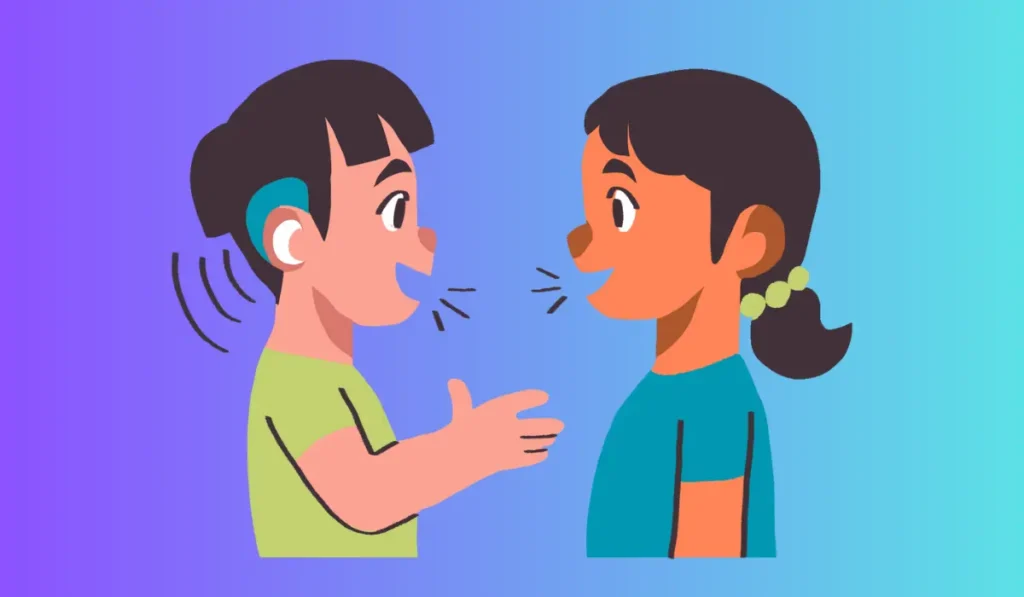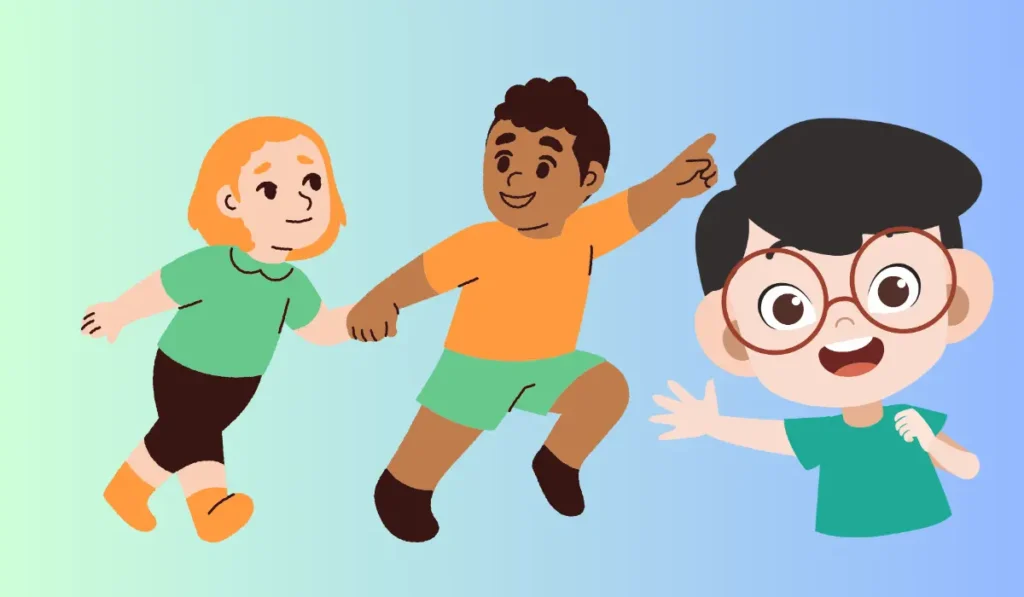The child-to-child approach is a teaching strategy that involves children teaching one another. This approach promotes active learning and peer-to-peer teaching.
Child-to-child teaching can have a positive impact on both the teacher and the student, with benefits such as increased self-esteem, improved social skills, and better grades.
The approach has been incorporated into many educational systems and continues to be a valuable tool for educators around the world.

Understanding Child To Child Approach
The child-to-child approach, also called CTC, is a highly effective way of teaching children while empowering them to create a positive impact in their society.
Unlike traditional education methods, it focuses on student-centered learning where children take charge of their personal and academic development.
How It Is Different From Traditional Education Methods
The CTC approach is a peer-to-peer learning model where children learn from each other. It places children at the center of the learning process instead of relying solely on teachers. This approach differs from traditional education methods in that it:
- Fosters a sense of collaboration between learners and educators
- Recognizes that children have unique strengths, and they should be free to help each other based on those strengths
- Promotes an environment of empathy, where children are taught to care for each other
The History And Evolution Of Child-to-Child Approach
The child-to-child approach was first developed by UNICEF in the 1970s to promote health education in developing countries. Initially, it was used to enhance children’s skills and knowledge around health matters such as proper hygiene and ways to prevent communicable diseases.
Over time, the approach evolved to address various aspects of children’s lives, including education. Today, the child-to-child approach is widely recognized for its ability to promote child participation, foster positive social values, and develop leadership skills in children.
Principles And Values Of Child To Child Approach
The child-to-child approach is based on several key principles and values that guide how education is delivered. These include:
- Respect: Children’s ideas are respected, and they are encouraged to share them.
- Participation: Children are actively engaged in the teaching and learning process.
- Empathy: Children are encouraged to look out for each other and take care of the needs of others.
- Inclusivity: The approach accommodates children with diverse backgrounds and abilities.
- Equality: All children involved in the learning process have the same opportunities to participate and access learning opportunities.
How It Promotes Student-Centered Learning
As mentioned earlier, the child-to-child approach is focused on student-centered learning. This approach encourages children to take charge of their academic and personal development. The approach aims to support children by:
- Encouraging collaboration between children and educators
- Enabling learners to identify their strengths and weaknesses and work together to improve
- Fostering creativity and innovation as children explore learning in exciting ways
- Promoting a sense of responsibility as children learn to take charge of their learning and the wellbeing of their peers.
The child-to-child approach emphasizes child participation in the learning process, which results in a positive impact on their social, emotional, and academic well-being.

Benefits Of Child To Child Approach
The child-to-child approach in education is a revolutionary concept that has gained momentum all over the world. Child to child is a model that encourages students to become teachers, allowing them to learn independently and work together constructively.
The approach is aimed at developing students’ academic as well as social and emotional skills and increasing enthusiasm for learning.
Child To Child Approach Can Improve Learning Outcomes
Learning outcomes can be improved through the use of the child-to-child approach. Students who feel comfortable teaching their peers develop a stronger understanding of the material and can apply it to new situations.
This also helps to reinforce the material and improve retention.
When students are more engaged in their education, they are more likely to take responsibility for it and experience increased motivation to learn.
Role In Developing Social And Emotional Skills
The child-to-child approach plays a crucial role in developing social and emotional skills in students. When children are asked to teach others, they must listen closely to understand where their peers need help.
This helps to build their empathy skills and makes them aware of the challenges different learners may face.
The approach also promotes teamwork and cooperation since students are working together towards a common goal.
Increased Student Autonomy And Responsibility
The child-to-child approach increases student autonomy and responsibility. It gives children the opportunity to take control of their own learning and become more independent.
Since teachers guide students in their teaching methods, students learn to personalize their instruction, making it easier for them to grasp concepts that are important to them.
When students are responsible for the education of their peers, they are more likely to take ownership of their learning. This helps to prepare them for future academic and professional endeavors.
Encourages A Growth Mindset
The child-to-child approach encourages a growth mindset because it provides a positive learning environment where making mistakes and learning from them is encouraged.
This helps to boost students’ confidence, allowing them to approach challenges with a growth mindset. By teaching their peers, students gain a deeper understanding of the material and are better equipped to explain it to others, which reinforces their own learning.
This approach instills a sense of responsibility and community among students and allows them to develop a love for lifelong learning.
The child-to-child approach has demonstrated the potential to revolutionize education worldwide.
The benefits it provides in terms of enhancing learning outcomes, developing social and emotional skills, and increasing student autonomy. Encouraging a growth mindset can help prepare students for the challenges of the future in ways that traditional teaching methods do not.
Challenges And Criticisms
The child-to-child (CTC) approach is an innovative method that facilitates children to care for and educate each other. Although this concept has many potential benefits, it also has certain challenges and criticisms.
Here, we will examine some possible obstacles, acknowledge valid criticisms, highlight the significance of properly trained educators, and discuss potential solutions to overcome challenges.
Challenges Educators May Face When Adopting This Approach
Educators may face some significant challenges when implementing the CTC approach. Some of the possible challenges include:
- Time: Educators may need to devote more time and effort to train students, monitor their progress, and manage the implementation of the approach.
- Child development: The degree to which children can participate effectively in the program is dependent on their age and development stage.
- Conformity: Some students may feel anxious about speaking up or sharing information in front of others. This may lead to a situation where only a small group of students are actively involved.
- Control: Teachers may find it challenging to maintain control of the classroom when giving students a greater role in the learning process.
Potential Solutions To Overcome Challenges
Several potential solutions can help educators overcome the challenges of implementing the CTC approach. Here are some of the potential solutions:
- Provide adequate training to teachers in TC techniques and methods to ensure they can manage the sessions effectively.
- Have trained educators develop appropriate guidelines, protocols, and frameworks to help students organize and implement the approach in a structured manner.
- Developed training modules that focus on primary social, experimental, and interactive learning, which will help children of all developmental stages participate.
- Having trained educators helps personalize the CTC approach for individual students.
The child-to-child approach has several challenges and criticisms that educators should take into account. Properly trained teachers can impact the implementation of the approach positively. With careful planning, the CTC approach can overcome the challenges and criticisms that have arisen.
Implementing Child To Child Approach In The Classroom
The child-to-child (CTC) approach revolutionizes the traditional teacher-centered methodology by empowering children to become change agents for their peers, families, and communities.
It aims to promote mutual learning and build leadership skills among children. Implementing this approach in classrooms provides numerous benefits for children’s holistic development.
Implementing Child To Child Approach In The Classroom
To implement the child-to-child approach in the classroom, educators should follow these actionable steps:
- Familiarize themselves with the CTC approach’s principles and objectives.
- Provide interactive and participatory learning opportunities for children.
- Foster critical thinking by encouraging children to express their unique perspectives and ideas.
- Facilitate peer-to-peer learning by encouraging children to share their knowledge and skills with their peers.
- Integrate community-based projects into the curriculum to promote social and environmental awareness.
- Encourage collaboration and teamwork among children to promote leadership and communication skills.
Frequently Asked Questions
What Is the Child-to-Child Approach?
The child-to-child approach is a peer teaching method that encourages children to teach each other and learn by doing.
How Does The Child To Child Approach Benefit Children?
The child-to-child approach promotes active learning, boosts confidence, and helps children develop important life skills such as communication, problem-solving, and leadership.
In What Settings Can The Child To Child Approach Be Implemented?
The child-to-child approach can be implemented in a variety of settings such as schools, communities, and healthcare facilities. It can be used to teach a wide range of topics.
Conclusion
As we conclude this blog post, it’s evident that the child-to-child approach has immense benefits for both the mentor and the mentee. This teaching and learning method provides a platform for children to learn from each other, empowering them to take ownership of their knowledge and skills. Through the child-to-child approach, children develop essential life skills such as communication, leadership, empathy, and collaboration. Additionally, this approach promotes inclusivity as children from diverse backgrounds can come together and learn from each other.


